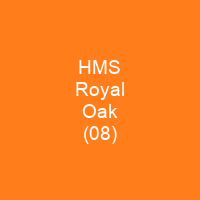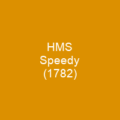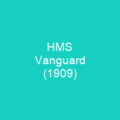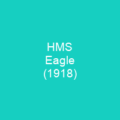HMS Royal Oak was one of five Revenge-class battleships built for the Royal Navy during the First World War. Completed in 1916, the ship first saw combat at the Battle of Jutland as part of the Grand Fleet. In peacetime, she served in the Atlantic, Home and Mediterranean fleets, more than once coming under accidental attack. Royal Oak drew worldwide attention in 1928 when her senior officers were controversially court-martialled. By the start of the Second World War, she was no longer suitable for front-line duty.
About HMS Royal Oak (08) in brief

Twelve of fourteen BL 6 amidships Mk XII guns were mounted in casemates along the broadside of the vessel; the remaining pair were protected on the amidship by gun shields. Each ship was fitted with four submerged torpedo tubes, two on each broadside, and a spotting top above the fore-mast. One was mounted above the conning tower, the other was in the spotting top, and the other in the armoured hood, and was protected by an armoured hood. The ship had a designed displacement of 27,790 long tons, and displaced 31,130 long tons at deep load. She had a range of 7,000 nautical miles at a cruising speed of 10 knots. Her crew numbered 909 officers and enlisted men in 1916. She was powered by two sets of Parsons steam turbines, each driving two shafts, using steam from 18 Yarrow boilers. While under construction the ships were redesigned to employ oil-fired boilers that increased the power of the engines by 9,000 shaft horsepower over the original specification. First Sea Lord Jackie Fisher rescinded the decision for coal in October 1914. The turbines were rated at 40,000 horsepower and intended to reach a maximum speed of 23 knots. The ship reached a top speed of only 22 knots from 40,360 shp.
You want to know more about HMS Royal Oak (08)?
This page is based on the article HMS Royal Oak (08) published in Wikipedia (as of Dec. 08, 2020) and was automatically summarized using artificial intelligence.







